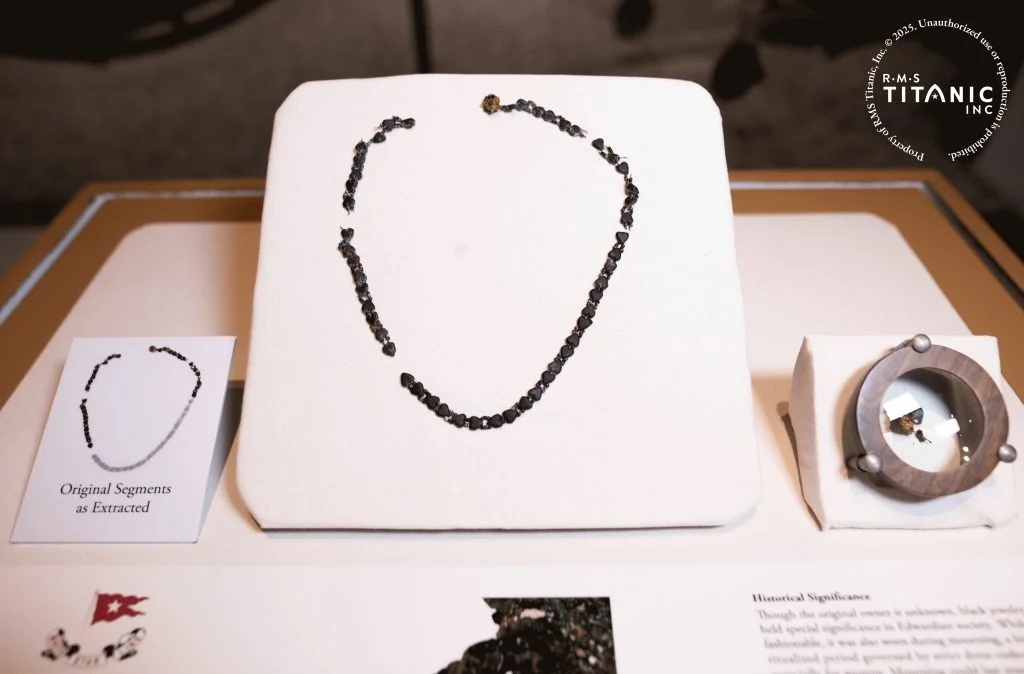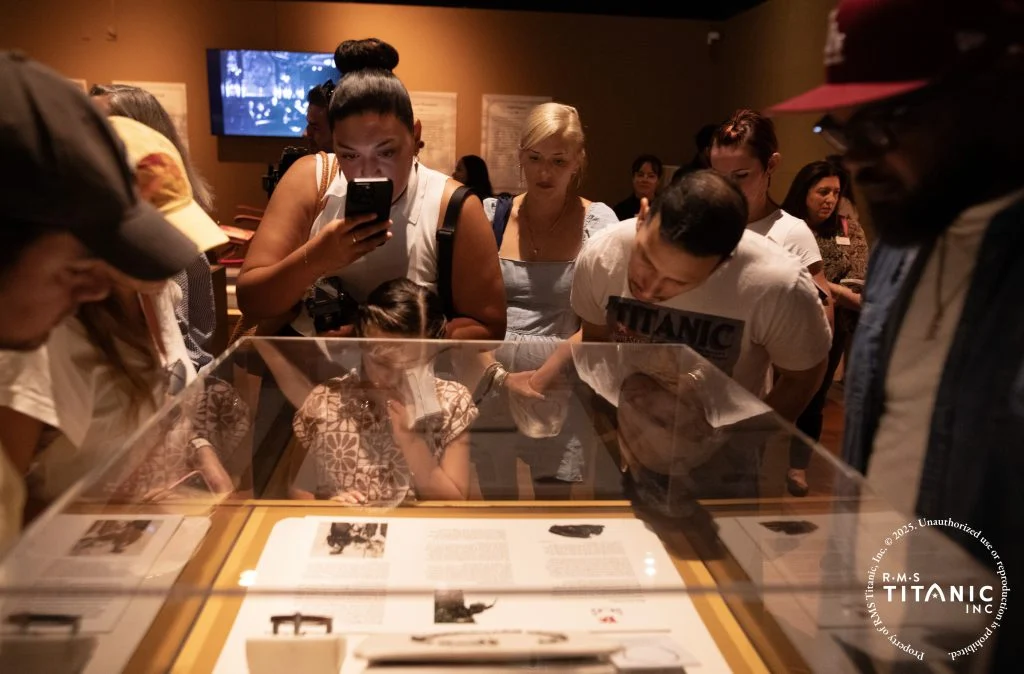- A black glass necklace from Titanic, hidden inside a sediment concretion for 25 years, has gone on view in Orlando.
- Likely worn by a mourning passenger, the necklace had remained unseen since the 1912 disaster.
- The necklace offers a rare, poignant glimpse into Titanic’s emotional legacy.
“Titanic: The Artifact Exhibition” opened in Orlando, Florida, 26 years ago. Even though the show’s operated by the sole company with rights to salvage artifacts from the wreckage, it doesn’t put new objects on view very often. The latest addition to the exhibition, however, is especially miraculous—a delicate black necklace likely worn by a mourning passenger. The necklace’s debut marks first time the public has laid eyes on it since Titanic sank in April 1912.
This jewelry was hidden for 25 years not beneath the sea, but in a concretion, a mass of sediment and artifacts fused together by immense underwater pressure. RMS Titanic, Inc. surfaced this concretion during a mission in 2000, and archived it “as a representative sample from the wreck site,” Tomasina Ray, president and director of collections of RMS Titanic, Inc., told me over email.
Beads from the necklace. Courtesy of RMS Titanic, Inc.
“At the time, we believed all associated artifacts had been removed,” Ray said. “However, during a recent review of material samples in storage, our team identified indications that something might still be embedded within the concretion.” Conservator Alex Klingelhofer dove in, carefully dusting off one precious speck, then another, until a string of black beads shaped like hearts and octagons emerged.
So, whose necklace was this? It’s pretty much impossible to know. RMS Titanic, Inc. has a practice of combing insurance claims in an effort to match the more than 5,500 objects they’ve brought ashore with their owners. Of course, it’s hard to file an insurance claim from beyond the grave—and this necklace may very well have belonged to one of the ship’s 1,496 victims, rather than the remaining 712 passengers who survived.

The case presenting the recently unearthed black glass necklace at “Titanic: The Artifact Museum”. Courtesy of RMS Titanic, Inc.
Luckily, we don’t need a name to appreciate this keepsake’s significance. Analysis revealed that it’s crafted from French jet—a type of black glass meant to look like real jet, which is fossilized coal. Mourners often wore jewelry made of jet glass, onyx, and other black materials throughout England’s Victorian and Edwardian eras, the latter of which ended just before Titanic took to the seas.
“There was a certain drama and beauty in how sorrow was made visible,” Ray and her colleague Ross Mumford, research and content specialist with RMS Titanic, Inc., explained over email. “This necklace offers a rare, tangible link to that world: it gives us a once-in-a-lifetime glimpse not only into the style and craftsmanship of the time, but also into the emotional landscape of the people aboard Titanic.”

Guest viewing the necklace at “Titanic: The Artifact Exhibition”. Courtesy of RMS Titanic, Inc.
Now the necklace sits in a glass case in the Life Onboard gallery in “Titanic: The Artifact Exhibition,” offering attendees a fresh source of intrigue—and Instagram fodder. Whereas so much of Titanic‘s story has turned into spectacle from the moment it sank 113 years ago, this necklace offers a poignant reminder of the humanity at the heart of this story.
“This black glass necklace embodies a striking duality: beauty and trauma, new beginnings and loss, 1912 and today,” Ray and Ross wrote. “Its heart-shaped beads seem to mirror the style of modern jewelry, grounding viewers in the understanding that Titanic’s passengers were not so different from us.”
“Titanic: The Artifact Exhibition” is on view at 7324 International Drive, Orlando, Florida.
